Section 4: 160
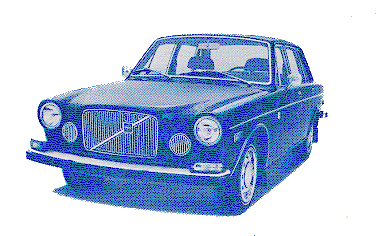
In August 1968, the Volvo 164 (six cylinder, four doors) was introduced in Sweden. It was an immediate success with buyers who wanted more luxury in a car longer than the 140.
The 164 (only one type of body was available in these cars) was introduced in the United States in the spring of 1969. For a little more than $4,000, the buyer drove off in a luxurious, distinctive-looking, roomy four-door sedan. The car was well received by both the press and the public. Its major competitors were luxury models from BMW and Mercedes.
The 164 was offered only as a four-door luxury sedan from 1969 through 1975.
Two models were offered:
- 164 - carbureted model up to 1972
- 164E - fuel injection model from 1972
Engine
The 164 has an in-line six-cylinder, seven main bearing crankshaft, overhead valve, gasoline engine. The engine displaces 2,978 cc (about 3.0 liters or 182 cubic inches). Both cylinder block and head are made of cast iron. A diesel engine was never available in this Volvo.
Engine size remained the same throughout the years, with the only change being the addition of fuel injection on 1972 164E models. All 1973 through 1975 models came with fuel injection instead of carburetors. The engines were assigned the B30 designation (B-30A for carburetor, B-30E and B-30F for fuel injection). These long, heavy and smooth-running engines are well suited to cruising on the highway.
TIP: Volvo pistons are available for engines that require rebuilding in a variety of sizes. Pistons are available as a complete set. For instance, a six-cylinder engine piston set includes one piston, one set of piston rings, one piston pin and retaining clips.
The six-cylinder B-30 is actually a four-cylinder B-20 with two more cylinders. Pistons, connecting rods and a few valve train parts are common to both the B-20 and B-30. The need to meet tougher emissions laws throughout the early 1970s was the main reason for changes to parts in the engine. The B-30 in-line six does not have any parts in common with the V-6 engines (B-27, B-28) used in later Volvos.
The type of routine maintenance parts (filters, hoses, belts, etc.) that need to be replaced should be replaced at intervals identical to the B-20-equipped 140. The only exception to this rule is the 1975 164E, and the reason for this will be explained later.
The pleated-paper rectangular air filter is located on the right side of all fuel injected engines (B-30E, B-30F). Carbureted engines (B-30A) use a large circular air cleaner element.
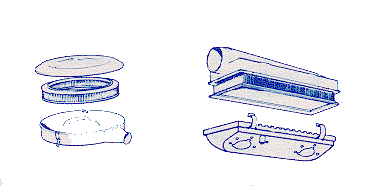
B-30F-equipped cars have a fuel filter located next to the gas tank that should be replaced every twelve months or 12,000 miles/19,200 km.
The oil filter, cooling system hoses and thermostat require routine replacement and are located in the same general area on the B-20 engines. A special B-30 aluminum water pump is also located in the front of the engine.
The 1973 and 1974 164E models contain an exhaust gas recirculation (EGR) valve and air injection reactor (AIR) pump to assist in reducing exhaust emissions. As indicated previously, the 1975 164E was an exception. It also included a catalytic converter to meet even stricter 1975 clean-air standards. This emission equipment worked on cleaning up the exhaust while the fuel injection system "cleaned" up the incoming stuff!
All Volvos sold since the early 1970s had a five-year/50,000-mile/80,000 km limited warranty on selected emissions parts from the date of delivery by dealer. This is a federal law.
In addition to those emission parts already mentioned, other emissions-related replacement parts include the:
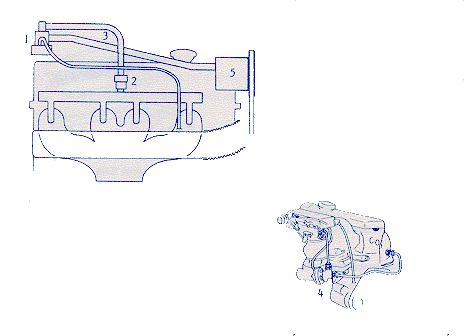
TIP: Car owners generally are not fully aware that emissions systems require the replacement of parts to work correctly. It's important to develop an understanding of the various emission system component parts.
Air conditioning was an option ($350 in 1969!) that most 164 owners didn't pass up. Again, the same system used on the B20 in the 140 was modified for use on the B30 in the 160. The main differences included longer pressure hoses and a better system for routing the ducting in the dash. Typical replacement parts included the drive belt and freon gas for charging the system. This was not an automatic (set the temperature and forget it) "automatic climate control" system.
This engine was a good match for the 164, which was more than 300 pounds heavier than a 140 car. It produced good amounts of torque at low engine speeds and was very reliable.
One problem occurred with early production B-30A engines. A hard plastic timing gear was used to operate the camshaft instead of the usual steel gear. For whatever reason, the plastic gear teeth didn't hold up. Fortunately, it was caught early enough. The 164 and 164E did not have the following engine parts as standard equipment or offer them as a factory option:
Electrical
The 164 was fitted with the same alternator and starter motor as the 140.
Nearly all of the electrical parts used in the 160 were developments of the 140.
The ignition distributor on all 164s, except for the 1975 164E, is a conventional breaker point type. A single set of breaker points in the ignition distributor fires each of the six spark plugs. Routine maintenance includes a new set of breaker (also called contact) points, one condenser, rotor, cap and six spark plugs. The 1975 164E uses an electronic ignition distributor that does not contain breaker points and a condenser.
Two different conventional breaker point type ignition distributors are available for the 160. One fits B30A engines and the other fits B30F engines.
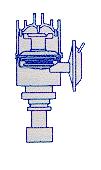
VERY IMPORTANT: The parts used in these two types of ignition systems must never be mixed! For instance, common sense says not to substitute an electronic ignition coil with a conventional ignition system coil.
Drive Train / Brakes
The 164 was available with either a manual or automatic transmission. The manual transmission is a special design based on the existing four-speed M-40 transmission. A listing of manual transmissions installed in the 160 and 140 appears below:
| Type | 140 Designation | 160 Designation |
| Four-speed | M-40 | M-400 |
| Four-speed+ Overdrive | M-41 | M-410 |
A dry plate clutch assembly is operated mechanically with a cable and release lever. Differences between the 160 and 140 clutch parts are listed below:
- The 160 uses a release lever (not a fork), which usually does not need replacement.
- Complete genuine Volvo clutch kits are available for the 160s. The pressure plate, disc and throwout bearing are available separately.
- The B-30A engines use a 9-inch diameter clutch disc - the B-30F uses a 91/2,-inch clutch disc. Each has its own part number.
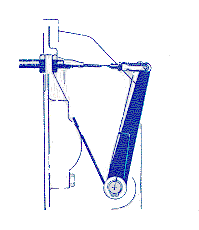
A Borg-Warner Type 35 automatic transmission was installed on many 164s. Improvements to internal parts were made to the transmission through the years. These changes included improving the ease and smoothness of shifting. The routine maintenance described for the BW35 in the 140 also applies to this.
The remainder of the drive train from the transmission back is 99.9 percent pure -- pure 140, that is! The U joints, bearings, bushings, shocks and most other parts are identical to the fuel-injected 144 models.
The 164 used the same power-assisted four-wheel disc brake system pioneered on the 140. Both Girling and ATE calipers were used. Many individual part numbers apply to both cars. The major parts differences between the cars are:
- The 1972-75 164s had ventilated front brake rotors; the 140 never did (except 1971 142E).
- The 1975 164E was equipped with a vacuum pump for the power brakes.
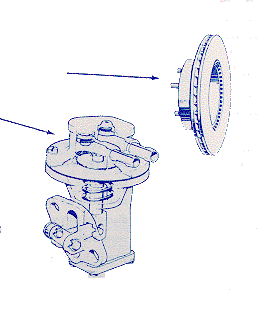
The front and rear suspension design is identical to the 140. Most part numbers apply to both cars and are located in the same place on these cars. The only exceptions are a few of the front and rear bushings, front upper wishbones and front coil springs.
Because of the extra weight of the six-cylinder engine and the idea that most buyers would add A/C to their cars, all 164 and 164E models came equipped with power steering (P/S). This was the first Volvo to have P/S as standard equipment.
The 160s used a power-assisted recirculating ball-type system. This system's most notable feature was its ability to match the amount of power assist to the need. For example, you need a lot of assist when parking, but not much at 55 mph. Most other P/S equipped cars had power assist constant at all times -- not a good idea.
The steering box is located on the lower left front of the engine compartment. Hydraulic fluid lines run from the box to the P/S pump located right above it. The pump is driven by a belt off of the engine.
The same attention to paint and corrosion protection given to the 140 appears in the construction of the 160. Vulnerable metal areas were the rocker - panels, door pillars, windshield cowl, front valance panel and headlight/taillight buckets. The underside of the 164 aiso received two -- not one -- undercoats, sprayed over the body and suspension components.
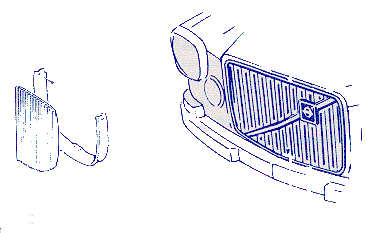
From the front of the windshield forward, nearly all the body part numbers are different when the 164 and 144 are compared. This includes the hood, fenders, front panels, grille and assorted trim.
TIP: Many body parts for the 164 may appear to be the same size as the 144, but they are not. The wheelbase of a 164 is 107.1 inches -- four inches greater than a 144. Although many other parts are common to both, never assume. Always ask the parts manager at your dealership.
Partial panels are also available for the 160 models.
The interior of the 164 and 164E was a refined 140 design. Leather upholstery was standard and through the years came in a variety of colors (blue, gold, black, burgundy). The seats were luxurious and comfortable. The ribbon-type speedometer, fuel and temperature gauges, and recessed control knobs are all carryovers from the 140s. An entirely new dashboard design was introduced with the 1973 164E.
Front and rear bumper design changed a number of times. Always identify bumper parts both by the vehicle identification number (VIN) and, when possible, "eyeball" the bumper!
Consider these facts about the 160 as they relate to Volvo parts:
- The 160 was a low-volume seller.
- It has been more than ten years since the last 164E was sold.
- The B-30 engine and M-400/410 transmissions have not been used in any other Volvo since then.
Because of these facts, it may be likely that you will not be involved too heavily with 160 parts. But you will be involved with something else.
These cars affected the systems and parts that were to be installed on a whole new group of Volvos -- the 240/260 (the subject of Workbook No. 2). Many of the luxury-type features found on Volvos today were first introduced on the 164. These include power steering, leather interior, wider wheels, tinted glass, map pockets, center armrest, seat storage pockets, ventilated front disc brake rotors and dual outside mirrors.

Throughout those years, the 164 remained a consistent performer. Partly because of this, the Volvo parts business kept growing throughout the turmoil of the early and mid-1970s.